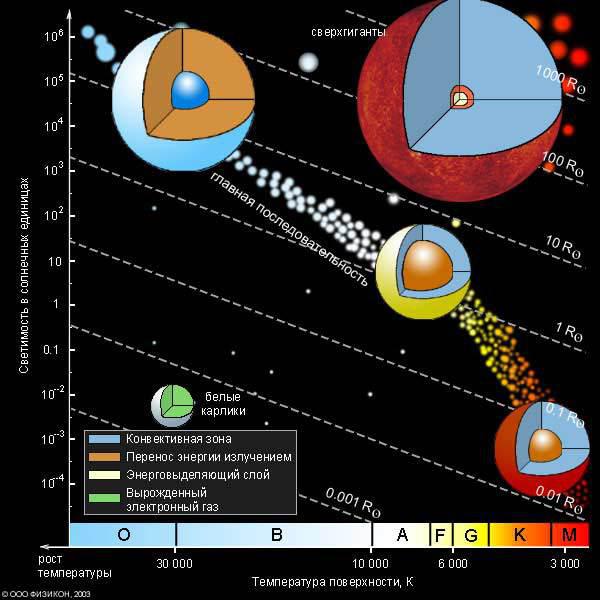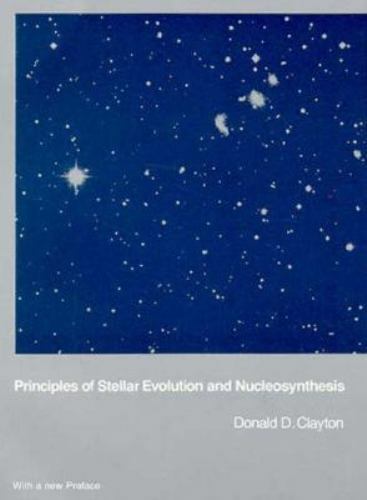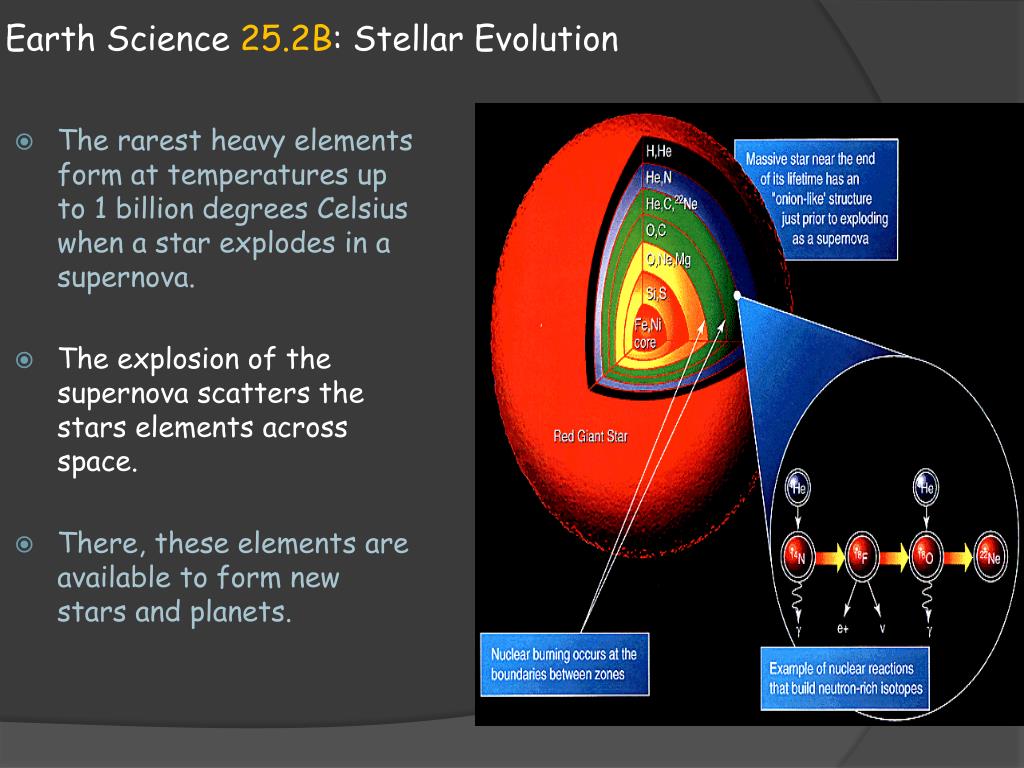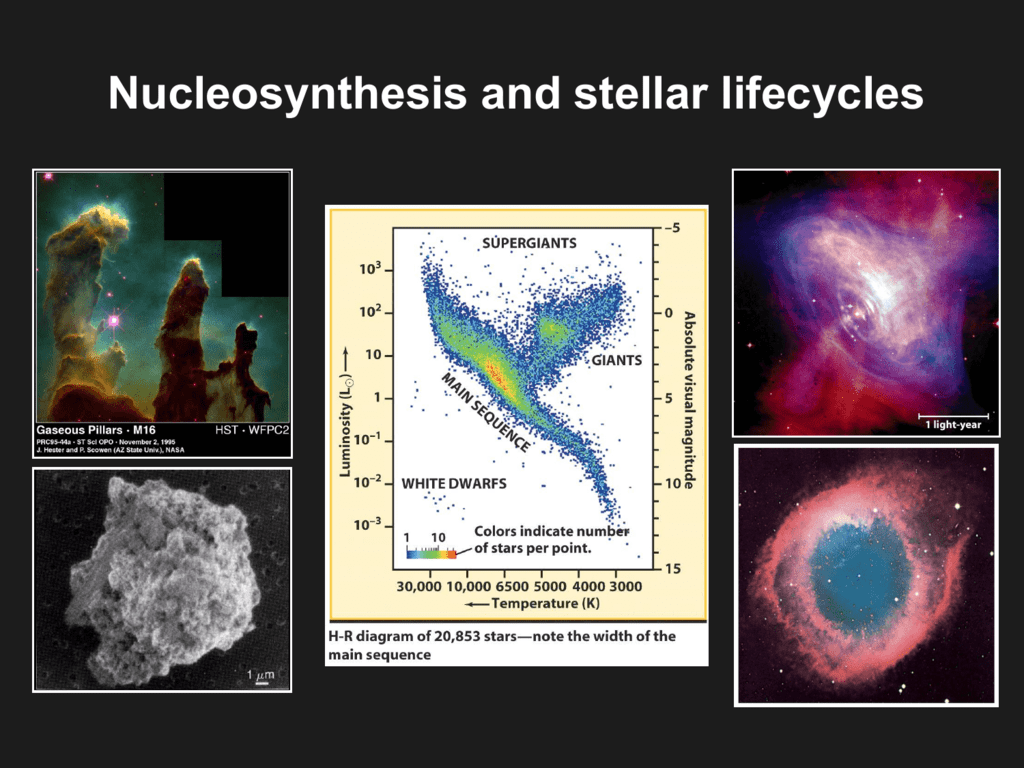Are you asking for 'nucleosynthesis stellar evolution'? All the details can be found here.
Celestial body NucleosynthesisNucleosynthesis is the process that creates new atomic nuclei from pre-existing nucleons, primarily protons and neutrons. The ordinal nuclei were conceived about three proceedings after the Grownup Bang, through the process called Adult Bang nucleosynthesis. consequent from the development of single stars is a rugged function of celestial body mass (Woosley et al., 2002). Favourable phases of H and helium on fire, all stars comprise of a carbon–oxygen core.
Table of contents
- Nucleosynthesis stellar evolution in 2021
- Stellar nucleosynthesis
- Oxygen plus helium produces
- Stellar fusion sequence
- Supernova nucleosynthesis elements formed
- Stellar evolution and nucleosynthesis pdf
- Stellar fusion or nucleosynthesis concept map
- Stellar synthesis
Nucleosynthesis stellar evolution in 2021
 This image representes nucleosynthesis stellar evolution.
This image representes nucleosynthesis stellar evolution.
Stellar nucleosynthesis
 This picture illustrates Stellar nucleosynthesis.
This picture illustrates Stellar nucleosynthesis.
Oxygen plus helium produces
 This image illustrates Oxygen plus helium produces.
This image illustrates Oxygen plus helium produces.
Stellar fusion sequence
 This picture illustrates Stellar fusion sequence.
This picture illustrates Stellar fusion sequence.
Supernova nucleosynthesis elements formed
 This image shows Supernova nucleosynthesis elements formed.
This image shows Supernova nucleosynthesis elements formed.
Stellar evolution and nucleosynthesis pdf
 This picture demonstrates Stellar evolution and nucleosynthesis pdf.
This picture demonstrates Stellar evolution and nucleosynthesis pdf.
Stellar fusion or nucleosynthesis concept map
 This picture representes Stellar fusion or nucleosynthesis concept map.
This picture representes Stellar fusion or nucleosynthesis concept map.
Stellar synthesis
 This picture shows Stellar synthesis.
This picture shows Stellar synthesis.
Which is the dominant fusion mechanism in smaller stars?
The proton–proton chain reaction starts at temperatures about 4 × 106 K, making it the dominant fusion mechanism in smaller stars. A self-maintaining CNO chain requires a higher temperature of approximately 16 × 106 K, but thereafter it increases more rapidly in efficiency as the temperature rises, than does the proton–proton reaction.
What is the physics of stellar nucleosynthesis?
After recalling general knowledge about nuclear reactions and stellar evolution, we highlight aspects of stellar nucleosynthesis and the underlying physics of stellar evolution where progress has been achieved during the last years.
Where is helium released in the nucleosynthesis process?
The helium nucleus is released at the top-left step. Hydrogen fusion (nuclear fusion of four protons to form a helium-4 nucleus) is the dominant process that generates energy in the cores of main-sequence stars. It is also called "hydrogen burning", which should not be confused with the chemical combustion of hydrogen in an oxidizing atmosphere.
Last Update: Oct 2021